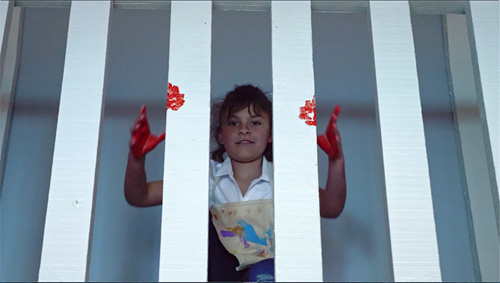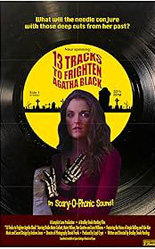
Who is Agatha Black and why is a chef’s dozen of tracks trying to frighten her? As appealingly (albeit a bit stiltedly) played by Bridie Marie Corbett, Agatha is practically a recluse — or “ree-cloose,” as a family member drawls — who barely gets out of the house she shares with her sickly aunt.
Make that shared, past tense, as Aggy is healing from the horror of a recent break-in that ended with her aunt murdered. To cope, she absorbs herself with a beloved childhood curio: a stack of ghost story LPs her late father gifted her.
As she revisits the stories, which get progressively more grisly and adult, elements from the slabs of vinyl bleed into real life, like a neighboring couple fatally hammered beyond recognition. As they say in Dallas, where this was shot, just what in the Sam Hill is going on here?

13 Tracks to Frighten Agatha Black is a perfect title. I admire not only its rhyming structure, but also how it sounds like the names adorning so many of the spooky albums that entertained kids in the 1960s and ’70s. I should know; I was one of them (for the ’70s half, at least). Before we were allowed to see horror movies or read horror comics, we could listen to horror story records. They were a gateway. As such, I hold reverence for them, even if I never want to hear them with middle-aged ears, preferring to leave that spell unbroken.
Whatever writer/director Bradley Steele Harding’s relationship is with 33 1/3 rpm novelties, his idea for 13 Tracks is ambitious, but also kinda brilliant! Other first-time filmmakers should be as lucky. Each time the needle drops on another tale, the fuzz on the soundtrack is so, so satisfying.
However, I almost didn’t watch it past the opening credits (narrated by cult legend Udo Kier, incidentally) because the dialogue-free prologue depicting Agatha as a child is off-puttingly overacted with motions befitting a mime’s routine. To be bluntly honest, I abandoned the movie twice across two years’ time before finally ceding my full attention, encouraged by a rave review in David John Koenig’s Lowest Common Denominator review guide. I’m glad I did.
While not “sure to give you the whim-whams” — a Monster a Go-Go reference, I assume — Harding’s movie bears enough ingenious touches for a rainy afternoon’s entertainment. I’d love to see his idea fleshed out with real financial weight behind it. Additionally, I look forward to his sophomore feature, Occult Canvas, which appears to mine another object of 1970s nostalgia: Rod Serling’s Night Gallery. —Rod Lott

